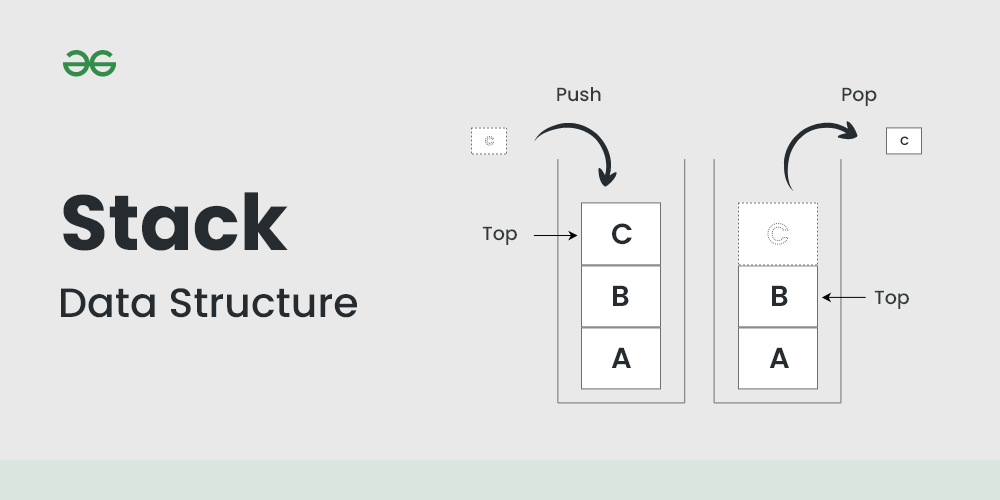STACK AND OPERATIONS
STACK AND OPERATIONS
Stack:
Stack is a linear data structure that follows LIFO (Last In First Out) Principle , so the last element inserted is the first to be popped out. In this article, we will cover all the basics of Stack, Operations on Stack, its implementation, advantages, disadvantages which will help you solve all the problems based on Stack.
Operations:
- Push: This operation adds an element to the top of the stack. When you push an element onto a stack, it becomes the new top element.
- Pop: This operation removes the top element from the stack. When you pop an element from a stack, it removes the top element and returns it.
- Peek (or Top): This operation returns the top element of the stack without removing it. Peek allows you to look at the top element without modifying the stack.
- isEmpty: This operation checks if the stack is empty. It returns true if the stack has no elements, otherwise false.
- isFull: This operation checks if the stack is full. In dynamic arrays, stacks usually grow dynamically as needed, so they rarely become full. However, in fixed-size implementations, isFull checks if the stack has reached its maximum capacity.
- Size: This operation returns the number of elements currently in the stack. It helps in knowing how many elements are currently stored in the stack.
Applications of Stack:
- Function calls: Stacks are used to keep track of the return addresses of function calls, allowing the program to return to the correct location after a function has finished executing.
- Recursion: Stacks are used to store the local variables and return addresses of recursive function calls, allowing the program to keep track of the current state of the recursion.
- Expression evaluation: Stacks are used to evaluate expressions in postfix notation (Reverse Polish Notation).
- Syntax parsing: Stacks are used to check the validity of syntax in programming languages and other formal languages.
- Memory management: Stacks are used to allocate and manage memory in some operating systems and programming languages.
Advantages of Stack:
- Simplicity: Stacks are a simple and easy-to-understand data structure, making them suitable for a wide range of applications.
- Efficiency: Push and pop operations on a stack can be performed in constant time (O(1)), providing efficient access to data.
- Last-in, First-out (LIFO): Stacks follow the LIFO principle, ensuring that the last element added to the stack is the first one removed. This behavior is useful in many scenarios, such as function calls and expression evaluation.
- Limited memory usage: Stacks only need to store the elements that have been pushed onto them, making them memory-efficient compared to other data structures.
Disadvantages of Stack:
- Limited access: Elements in a stack can only be accessed from the top, making it difficult to retrieve or modify elements in the middle of the stack.
- Potential for overflow: If more elements are pushed onto a stack than it can hold, an overflow error will occur, resulting in a loss of data.
- Not suitable for random access: Stacks do not allow for random access to elements, making them unsuitable for applications where elements need to be accessed in a specific order.
- Limited capacity: Stacks have a fixed capacity, which can be a limitation if the number of elements that need to be stored is unknown or highly variable.
Stacks are fundamental data structures used in many algorithms and applications, such as expression evaluation, function call management, backtracking, and more. They provide an intuitive way to manage data that follows a last-in, first-out order, making them efficient for various programming tasks.
B.Trishanth Kumar
23BK1A05K9
Comments
Post a Comment